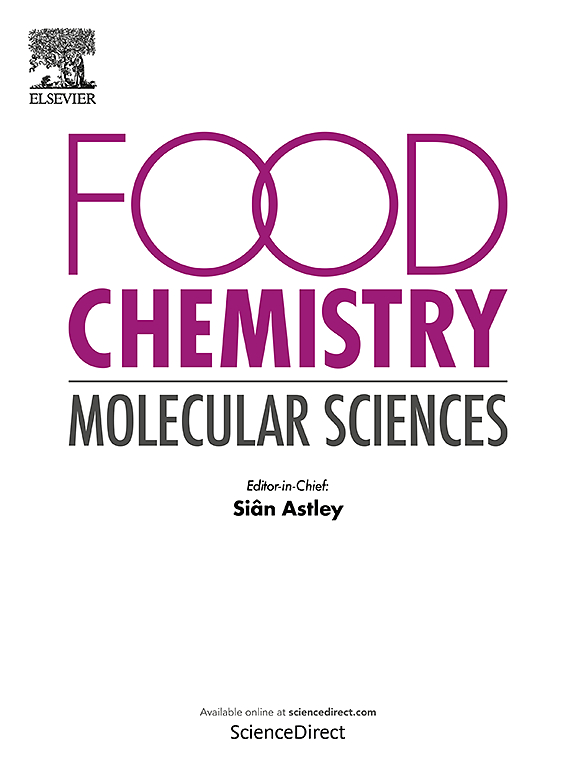Metabolic-inhibitor profiling links phenotype and transcriptome of Lachancea thermotolerans to wine fermentation chemistry
IF 4.7
Q2 FOOD SCIENCE & TECHNOLOGY
引用次数: 0
Abstract
We applied targeted metabolic inhibitors to 145 Lachancea thermotolerans strains to uncover fermentation traits with direct relevance to wine quality. Oxamate, a lactate dehydrogenase inhibitor, reduced lactic acid and total titratable acidity by 21% and 26%, respectively, while increasing succinic acid and pH without affecting ethanol levels, offering a promising strategy to fine-tune wine freshness and balance. Notably, industrial grape-associated strains (clusters C4–C6) maintained robust growth under oxamate stress, unlike wild strains, positioning oxamate resistance as a practical marker for selecting high-performing, acidifying yeasts for winemaking. Additional inhibitors such as metformin shifted redox metabolism, significantly enhancing glycerol (+25%) and acetic acid (+319%) production. Transcriptomic analyses showed that OXA alone, and even more so the DSF + OXA combination, repressed LDH2 and upregulated GPD1 and oxidative phosphorylation genes, whereas MET caused only moderate changes. This integrated phenomic-transcriptomic approach not only provides valuable tools for yeast screening but also defines a roadmap for optimizing wine composition through the precision selection of L. thermotolerans strains.
代谢抑制剂分析将耐高温葡萄树表型和转录组与葡萄酒发酵化学联系起来
我们对145株耐高温葡萄球菌进行了靶向代谢抑制剂研究,以揭示与葡萄酒品质直接相关的发酵特性。草酸酯是一种乳酸脱氢酶抑制剂,可使乳酸和总可滴定酸度分别降低21%和26%,同时在不影响乙醇水平的情况下增加琥珀酸和pH值,为调整葡萄酒的新鲜度和平衡性提供了一种有前途的策略。值得注意的是,与野生菌株不同,工业葡萄相关菌株(簇C4-C6)在草酸盐胁迫下保持了强劲的生长,将草酸盐抗性定位为选择高性能酸化酿酒酵母的实用标记。二甲双胍等其他抑制剂改变了氧化还原代谢,显著提高了甘油(+25%)和乙酸(+319%)的产量。转录组学分析表明,OXA单独,甚至DSF + OXA组合,抑制LDH2,上调GPD1和氧化磷酸化基因,而MET只引起适度的变化。这种综合的表型-转录组学方法不仅为酵母筛选提供了有价值的工具,而且为通过精确选择耐高温L.菌株来优化葡萄酒成分确定了路线图。
本文章由计算机程序翻译,如有差异,请以英文原文为准。
求助全文
约1分钟内获得全文
求助全文
来源期刊

Food Chemistry Molecular Sciences
Agricultural and Biological Sciences-Food Science
CiteScore
6.00
自引率
0.00%
发文量
83
审稿时长
82 days
期刊介绍:
Food Chemistry: Molecular Sciences is one of three companion journals to the highly respected Food Chemistry.
Food Chemistry: Molecular Sciences is an open access journal publishing research advancing the theory and practice of molecular sciences of foods.
The types of articles considered are original research articles, analytical methods, comprehensive reviews and commentaries.
Topics include:
Molecular sciences relating to major and minor components of food (nutrients and bioactives) and their physiological, sensory, flavour, and microbiological aspects; data must be sufficient to demonstrate relevance to foods and as consumed by humans
Changes in molecular composition or structure in foods occurring or induced during growth, distribution and processing (industrial or domestic) or as a result of human metabolism
Quality, safety, authenticity and traceability of foods and packaging materials
Valorisation of food waste arising from processing and exploitation of by-products
Molecular sciences of additives, contaminants including agro-chemicals, together with their metabolism, food fate and benefit: risk to human health
Novel analytical and computational (bioinformatics) methods related to foods as consumed, nutrients and bioactives, sensory, metabolic fate, and origins of foods. Articles must be concerned with new or novel methods or novel uses and must be applied to real-world samples to demonstrate robustness. Those dealing with significant improvements to existing methods or foods and commodities from different regions, and re-use of existing data will be considered, provided authors can establish sufficient originality.
 求助内容:
求助内容: 应助结果提醒方式:
应助结果提醒方式:


